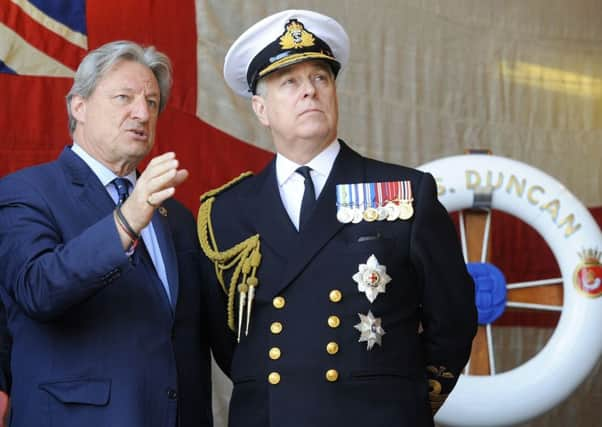Dr Jennifer Novotny: Clyde ships crucial to naval war effort


One hundred years ago on 31 May, the British Grand Fleet met the German High Seas Fleet in the most important naval battle of the First World War. The Royal Navy’s 150 ships met 99 German ships in the North Sea – 100,000 sailors manoeuvring the might of the world’s two most advanced navies in the only full-scale naval engagement of the First World War.
This weekend the national commemorations of the battle will take place in Orkney. They highlight Scotland’s contribution to the First World War at sea, particularly the great ships constructed along the Clyde and the strategically important harbours of Rosyth and Scapa from which the fleets of Admirals Beatty and Jellicoe set sail to meet their German counterparts.
Advertisement
Hide AdAdvertisement
Hide AdJutland was a difficult battle for the Royal Navy, marred by failures of communications that saw orders delayed or not relayed at all. It was a battle in which mistakes made in smoke and confusion had deadly consequences. The Royal Navy lost 14 ships at Jutland and nearly 6,000 men, while the German fleet lost 11 ships and 2,500 men. Despite this disparity in losses, both sides claimed victory. In Britain there was initial disillusionment: a grand naval engagement had been anticipated since the start of war in 1914, but this was no clear-cut victory. Yet with hindsight we now recognise that Jutland ultimately relegated the German High Seas fleet to port, its strategic focus shifting to unrestricted submarine warfare in 1917.
The ships of the Royal Navy unquestionably outnumbered and outgunned the German fleet. Furthermore the Admiralty had intercepted a German naval codebook and was able to decipher its wireless communications. Thus when the German navy set sail late on 30 May, Jellicoe correspondingly left Scapa with the big dreadnoughts, followed by Beatty and his battlecruisers the following day. By mid-afternoon on 31 May, Beatty met Admiral Hipper at the front of the German fleet, beginning the cat-and-mouse manoeuvring of ships trying to lure their enemy into position. By early evening this culminated in full-fleet engagement with the battle raging on into the early hours of 1 June. By dawn of that day, the German fleet had managed to extricate itself from the engagement and was steaming back to port.
Despite the superiority of the Royal Navy in numbers, the German navy had several distinct advantages: its ships were more heavily armoured, it used a more stable cordite compound in their ammunition and stored it more safely, had effective armour-piercing shells, and was better at night fighting.
Initial reports of the battle were confused. The German press immediately declared that “our Fleet has victoriously fought the most powerful Fleet in the world” (Berliner Tageblatt), while The Scotsman’s report of the battle on 3 June states with some frustration: “[t]he accounts officially furnished from each side are meagre, besides being in many important particulars directly at variance; and as to what led up to the action, and how it developed, we are left almost entirely in the dark.” What the newspaper could clearly identify, however, was that the Germans inflicted “heavier damage than they sustained”, though this is tempered with the observation that “losses which, if they be less than those of our own Fleet, the Germans Navy is less able to afford”.
Jutland was not just the meeting of 100,000 sailors and 249 ships: it was the culmination of the technical knowledge and skilled labour of two highly industrialised societies. A number of Clyde-built ships were involved in the battle, including the Queen Elizabeth-class battleship HMS Barham, and battlecruisers HMS Tiger and HMS Inflexible,built by John Brown Engineering at Clydebank. William Denny & Brothers of Dumbarton produced HMS Engadine, the seaplane carrier from which the first heavier-than-air reconnaissance flight during a naval battle was launched.
Scott’s Shipbuilding and Engineering Company of Greenock produced the HMS Colossus, flagship of Rear-Admiral Ernest Gaunt, while Alexander Stephen & Sons in Govan built the destroyer HMS Nomad.
• Dr Jennifer Novotny is a Research Assistant in History at the University of Glasgow